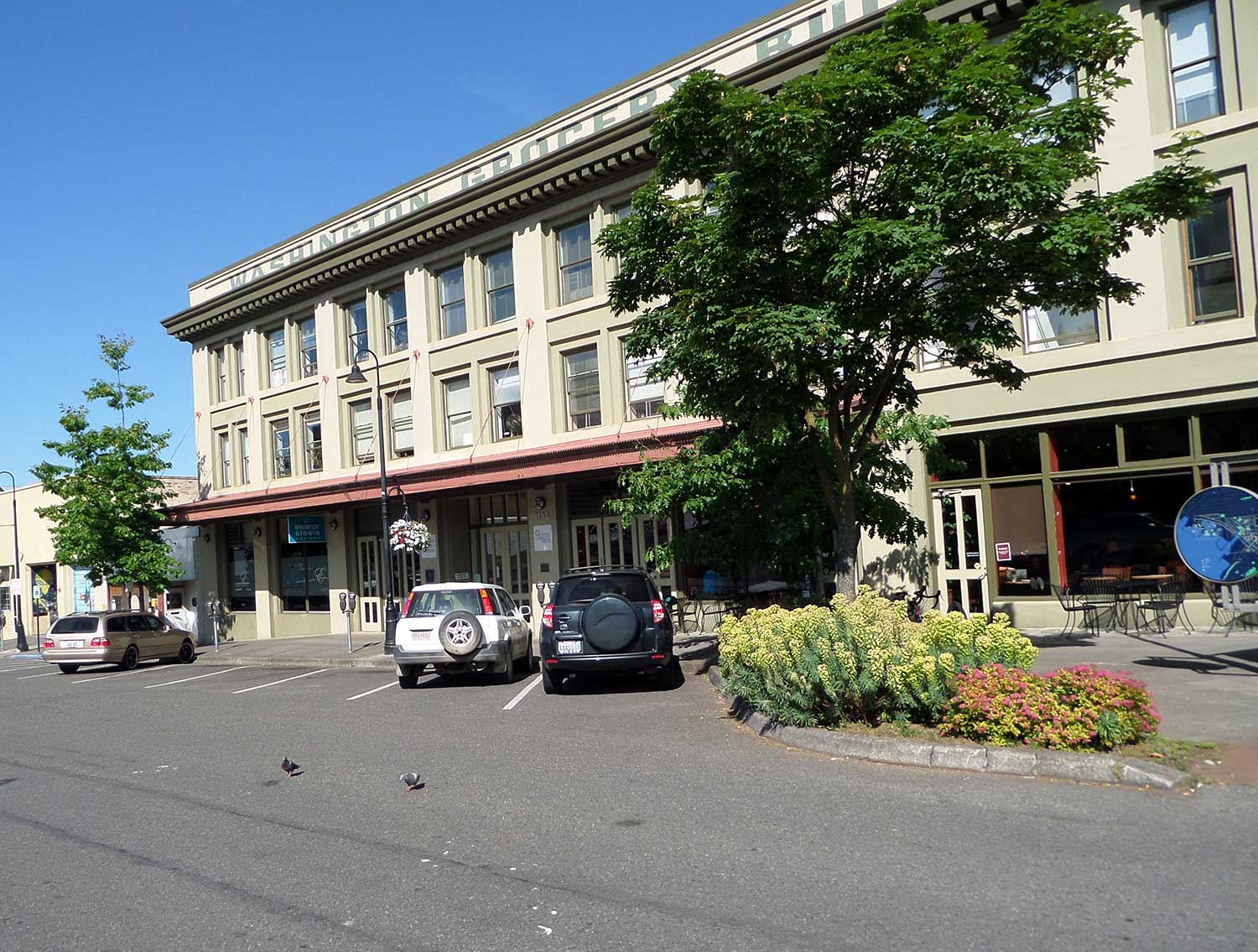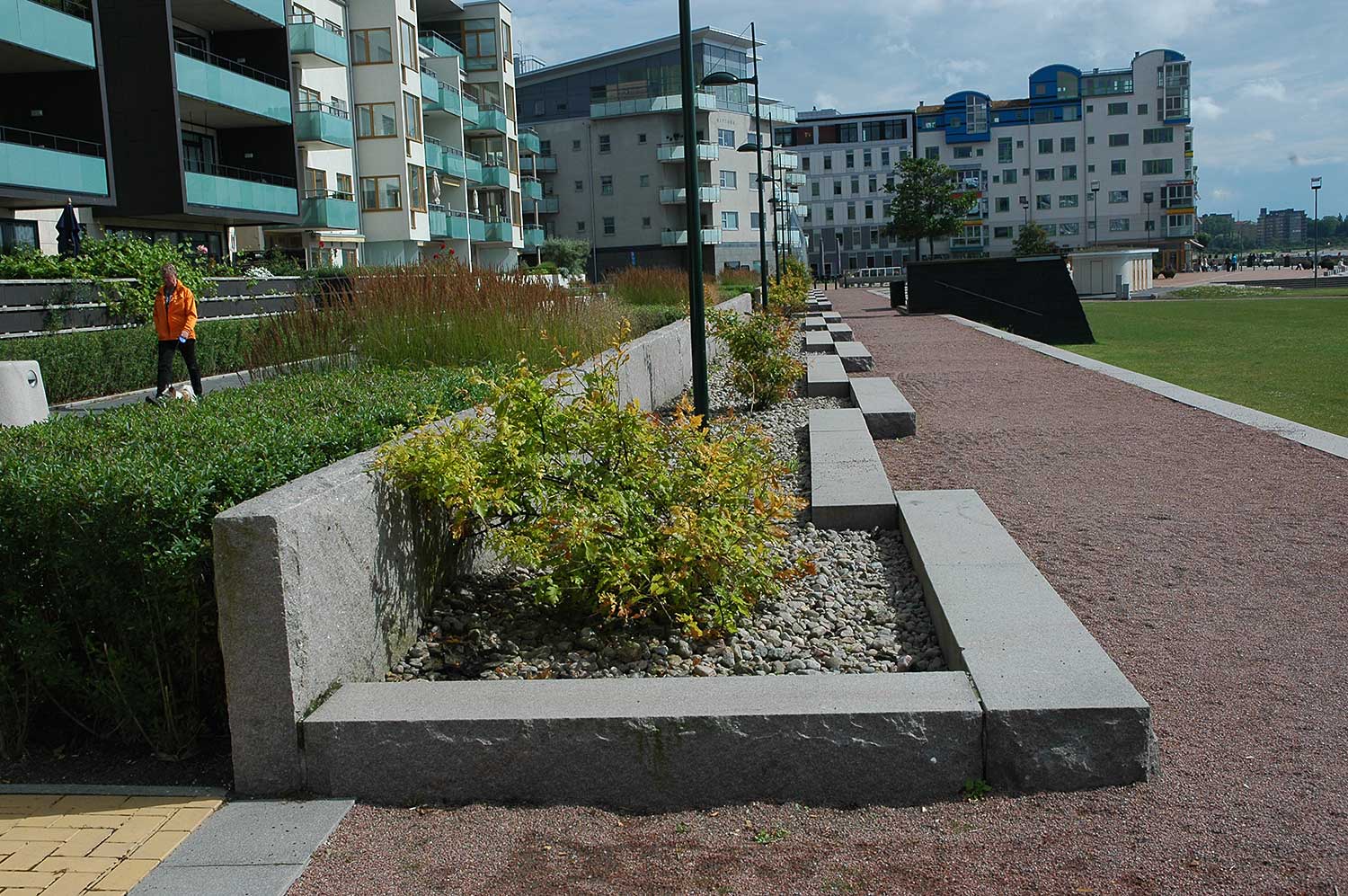Post Development

Connected impervious surfaces are common in both commercial and residential settings. Photo: Austin, 2012.
Since one goal of stromwater management is to limit the rate of runoff after development to the rate under natural conditions, we need to develop two models of the site that we can compare. Then post-development surfaces, ponds, etc. can be adjusted until the proposed landscape performs to pre-development standards or better.
In this class we will actually compare the pre-development peak runoff rate and volume to two post-development alternatives. The first alternative is a conventional design where paving and roofs are made of impervious surfaces and a detention basin is used to meet pre-development standards. The second alternative will include green infrastructure elements, such as green roofs, permeable paving, and bioretention basins (rain gardens), to manage stormwater. In addition, these techniques will provide secondary benefits including pollution treatment and biological diversity enhancement.
Conventional development often includes many connected impervious surfaces. An extreme but common example of connected imprevious conditions is when impervious roof runoff is collected in gutters and delivered via downspouts to a concrete or asphalt driveway that slopes to the street where a curb and gutter takes the water to a catch basin and stormwater pipe that discharges the water into a receiving stream. Breaking this sequence with pervious landscape elements can slow and reduce site runoff.
Resources and Perparation

Stormwater should be directed across pervious landscape and permeable paving to disconnect the immpervious chain. Austin, 2012.
To gain familiarity with TR-55 Post-development estimates of runoff rate and volume, you are to replicate Example 1 parts B and C in the WinTR-55 User Manual. Example 1 begins on page 58 of the pdf document. You are to complete this assignment using the WinTR-55 software before class. Name the file "your last name Ex1BC_post". The goal of this assignment is to make you familiar with the softwater and to acheive the same result as the example.
In-Class Activity and Required Data
We will take two class periods to complete the post-development estimates of peak runoff, volume and detention basin sizing for two Semester Poject proposed designs. First we will develop a traditional design without the use of bioswales, bioretention bed, permeable paving, green roofs, etc. We will calculate the post-development runoff (cubic feet per second, cfs) and volume (runoff depth) and size a detention basin to limit post-development runoff to pre-development cfs. Then we will recalculate these characteristics with the sustainable stormwater landscapes. You are to contrast these two products to demonstrate the performance of each proposed landscape alternative.
Before these classes prepare the following information. Diagram subareas, reaches (swales) and ponds (structures) for the site. Calculate the area of all sub-areas in acres. Measure the lengths of all reaches and determine their gradient (percent). Within each sub-area calculate the area (acres) of each surface type (impervious surface, pervious).
For the second alternative you are to provide the areas (acres) for the sustainable stormwater landscapes within each sub-area.